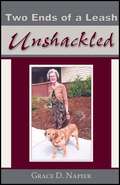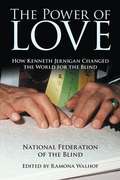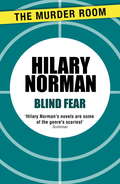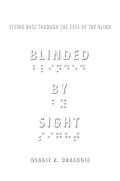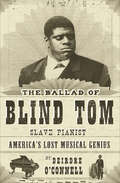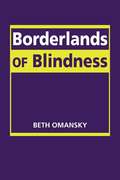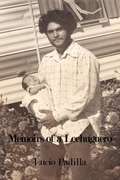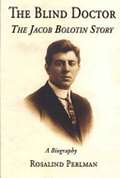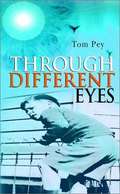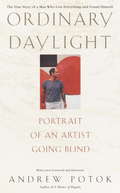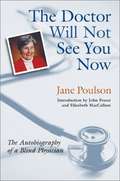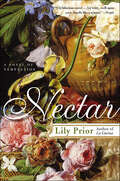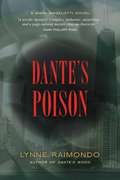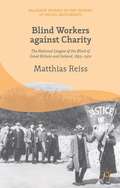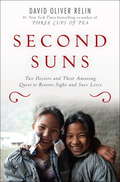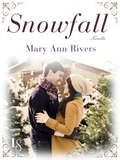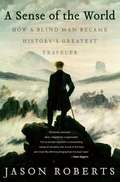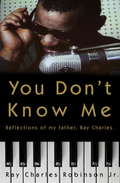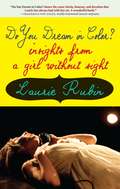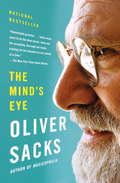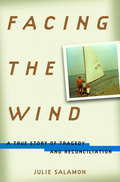Special Collections
Blindness and Visual Impairment Special Collection
Description: A collection featuring biographies, memoirs, fiction and non-fiction by and about members of the blind community. #disability
- Table View
- List View
Two Ends of a Leash
by Grace D. NapierTwo Ends of a Leash: Unshackled is the life story of author Grace D. Napier.
Born blind, Grace came from a humble home in New Jersey. She began school when there were no special education programs for children who were blind. The teachers and principal regarded Grace as not only blind, but also mentally retarded. Because they misunderstood her disability, they ignored her, letting her sit idle at her desk every day. Nevertheless, Grace had a hunger to learn.
When her parents heard about a special education program in the next city, Grace met Miss Katharine Taylor, her new special education teacher. Grace's life was forever changed, thanks to the influence of this gifted teacher. Now eighty-five, Grace resides in Colorado after a long career of teaching children and graduate students at three universities.
Grace began using Seeing Eye dog guides when she was seventeen years old. She is now working with her ninth dog, Esma (shown on the front cover). Read her fascinating and inspiring story.
Let Freedom Ring
by National Federation of the BlindA collection of letters to President Obama about the experience of using braille.
The Power of Love
by National Federation of the BlindThe Power of Love: How Kenneth Jernigan Changed the World for the Blind shares the voices of a collection of individuals whose writings reveal the deep truth that serves as the foundation for the life and work of Kenneth Jernigan.
His life and their writings together speak of how Thomas Jefferson's self-evident truths imply that equality extends to embrace blind people just as surely as this country has come to understand equality's inclusion of all people regardless of the color of their skin.
Ramona Walhof, editor of The Power of Love and longtime friend of Kenneth Jernigan, draws together the distinctive voices of individuals who knew Kenneth Jernigan and whose lives he touched through his work with the National Federation of the Blind. Each of the reflections begins with a brief biographical sketch that introduces the chapter's author and ties his or her life to Kenneth Jernigan and his work.
The book concludes with a chapter, "Blindness: The Federation at Fifty," a retrospective written by Kenneth Jernigan himself in the last decade of his life. The Power of Love: How Kenneth Jernigan Changed the World for the Blind gathers a polyphonic chorus of voices that tell how the power of love, coursing through the life of Kenneth Jernigan, changed the world for the blind and, in so doing, changed the world for everyone.
Blind Fear
by Hilary NormanHeld captive in a dark room in New York State, a young woman is at the mercy of a killer. As guide-dog trainer Joanna finds herself fighting her attraction to blind sculptor Jack Donovan she also begins to feel dangerously unwelcome. Meanwhile, another object of beauty is being stalked ...'Hilary Norman specialises in creepy thrillers and this one is just as gripping as her previous work' Woman's Own
Blinded by Sight
by Osagie K. ObasogieColorblindness has become an integral part of the national conversation on race in America. Given the assumptions behind this influential metaphor—that being blind to race will lead to racial equality—it's curious that, until now, we have not considered if or how the blind "see" race. Most sighted people assume that the answer is obvious: they don't, and are therefore incapable of racial bias—an example that the sighted community should presumably follow.
In Blinded by Sight,Osagie K. Obasogie shares a startling observation made during discussions with people from all walks of life who have been blind since birth: even the blind aren't colorblind—blind people understand race visually, just like everyone else. Ask a blind person what race is, and they will more than likely refer to visual cues such as skin color. Obasogie finds that, because blind people think about race visually, they orient their lives around these understandings in terms of who they are friends with, who they date, and much more.
In Blinded by Sight, Obasogie argues that rather than being visually obvious, both blind and sighted people are socialized to see race in particular ways, even to a point where blind people "see" race. So what does this mean for how we live and the laws that govern our society? Obasogie delves into these questions and uncovers how color blindness in law, public policy, and culture will not lead us to any imagined racial utopia.
The Ballad of Blind Tom, Slave Pianist
by Deirdre O'ConnellThe true story of a black musical savant in the era of slavery.
Born into slavery in Georgia, Tom Wiggins died an international celebrity in New York in 1908. His life was one of the most bizarre and moving episodes in American history. Born blind and autistic-and so unable to work with other slaves-Tom was left to his own devices. He was mesmerized by the music of the family's young daughters, and by the time he was four Tom was playing tunes on the piano.
Eventually freed from slavery, Wiggins, or "Blind Tom" as he was called, toured the country and the world playing for celebrities like Mark Twain and the Queen of England and dazzling audiences everywhere. One part genius and one part novelty act, Blind Tom embodied contradictions-a star and a freak, freed from slavery but still the property of his white guardian. His life offers a window into the culture of celebrity and racism at the turn of the twentieth century.
In this rollicking and heartrending book, O'Connell takes us through the life (and three separate deaths) of Blind Tom Wiggins, restoring to the modern reader this unusual yet quintessentially American life.
Undaunted by Blindness
by Clifford E. OlstromThe purpose of this book is to provide concise biographical information about four hundred notable blind persons. The people in this volume are but a small sample of the many thousands of notable blind persons in history.
Borderlands of Blindness (Disability in Society Series)
by Beth OmanskyBeth Omansky explores the lives of people with legal blindness to show how society responds to those who don't fit neatly into the disabled/nondisabled binary. Probing the experience of education, rehabilitation, and work, as well as the more intimate spheres of religion, family, and romantic relationships, her frank and theoretically sophisticated portrait of the legally blind experience offers an insight into our understanding of the social construction of disability.
Memoirs of a Lechuguero
by Lucio PadillaThe autobiography depicts the life of a Mexican migrant farm worker who overcomes his disadvantages to be the first college graduate in his family. The veteran lettuce harvester suffers a crippling, job related injury that leaves him unable to work. During the painful recovery, he goes through a series of flashbacks of key events leading to the injury. Inspired by a blind man and a former teacher, he finds the turning point of his life.
Lucio Padilla came to the United States at age nine with his family to work the fields of central and southern California. As a teenager he endured the hardships and abuses that farm workers experience. He dropped out of school at age fifteen to become a lechuguero (lettuce harvester). He married at age sixteen with his sweetheart Maria Elena. Together they faced their disadvantages to raise a family and give them better opportunities. The story portrays the farm worker's way of life; it illustrates the harsh living conditions and the enslaving routines. Particular phrases in Spanish are used to illustrate the language, culture, and values of the farm worker's families.
The Blind Doctor
by Rosalind PerlmanJacob Bolotin was born blind to poor Jewish parents in Chicago in 1888. Rejecting the conventional wisdom of his time, he was determined to "be of use" in the world. He learned Braille and developed an uncanny sense of touch and hearing that would later make him one of the top heart and lung specialists in the city. He fought his way into and through the Chicago College of Medicine, graduated with honors at twenty-four, and became the world's first totally blind physician fully licensed to practice medicine.
Dr. Jacob Bolotin was a pioneer in raising the awareness of the world to the plight of the blind and the need for treating people with disabilities as capable and productive citizens. He died in 1924; he was only thirty-six years old. Five thousand people attended his funeral.
She Walked by Faith Not by Sight
by Jenny PetersonJenny Peterson's life changed when she had a rare condition that left her legally blind and aware of God. Over the next thirty-three years she grew in her faith and allowed God to take control. With that control God led Jenny to doctors who not only saved her life but restored her sight.
Through Different Eyes
by Tom PeyAt age 38, a childhood accident came back to haunt Tom Pey and took his sight. Follow his struggle with depression, job loss and alcoholism. Follow his success as he finds a deeper meaning in life.
Ordinary Daylight
by Andrew PotokAndrew Potok is an intense, vigorous, sensual man--and a gifted painter. Then, passing forty, he rapidly begins to go blind from an inherited eye disease, retinitis pigmentosa. Depressed and angry, he rages at the losses that are eradicating his life as an artist, his sources of pleasure, his competence as a man. He hates himself for becoming blind. But as he will ultimately discover, and as this remarkable memoir recounts, it is not the end of the world. It is the beginning.
his the story of Potok's remarkable odyssey out of despair. He attempts to come to terms with his condition: learning skills for the newly blind, dealing with freakish encounters with the medical establishment, going to London for a promised cure through a bizarre and painful "therapy" of bee stings. He wrestles with the anguish of knowing that his daughter has inherited the same disease that is stealing his own eyesight. And then, as he edges ever closer to complete blindness, there comes the day when he recognizes that the exhilaration he once found in the mix of paint and canvas, hand and eye, he has begun to find in words.
By turns fierce, blunt, sexy, and uproariously funny, Andrew Potok's memoir of his journey is as shatteringly frank as it is triumphant.
The Doctor Will Not See You Now
by Jane PoulsonA spiritual autobiography by Dr. Poulson takes the reader by the arm through the story of her career as a sighted medical scientist who became blind in the first year of her professional career. No reader will fail to be astonished and inspired by her accomplishments and optimism.
Nectar
by Lily PriorRamona Drottoveo, an albino, is a chambermaid at a lush Italian estate. Distinguished by the intoxicating scent she exudes, Ramona is despised by all women and adored by all men, whose inexhaustible lust she eagerly satisfies. Life changes when her husband dies after discovering his bride with another man on their wedding night. Blamed for his death, Ramona and her lover are exiled to the neighboring city of Naples. There, Ramona's life is transformed once again by the birth of a daughter, Blandina, who "steals" her mother's scent. No longer able to seduce men into blind submission, Ramona humbly returns to the estate to an unexpected welcome -- and revenge. A hilarious and naughty celebration of the senses and the strange places they can lead us, Nectar explores the mystery of sexual attraction and the frivolous nature of divine justice.
The Blind In Industry
by Ben PurseA brief outline of the issues facing the organizations and individuals interested in employment of the blind, sheltered shops, industry, women workers, education, college certifications, teachers.
Dante's Poison
by Lynne RaimondoBlind psychiatrist Mark Angelotti has just enrolled in a drug trial that holds out hope of restoring his eyesight when he again becomes entangled in a case that is rocking the Chicago legal community. After defending the manufacturer of the powerful antipsychotic drug Lucitrol against product-liability claims, attorney Jane Barrett has become somewhat of an expert on the controversial medication. So when her lover, investigative journalist Rory Gallagher, collapses from a fatal dose of the same drug, it falls to Hallie Sanchez, Barrett's oldest friend, to defend her on murder charges. Amid growing doubts about her friend's innocence, Hallie recruits Mark Angelotti to help her discredit the testimony of a crucial eyewitness. The pair succeeds in obtaining Barrett's release, but at a dreadful price. Mark sets out to investigate who else may have wanted the journalist out of the way. As he gets closer to the truth, he realizes the killer is still on the loose. But two questions remain for Mark: Will the drug trial succeed in restoring his eyesight? More important, will he live long enough to see this case to its end?From the Trade Paperback edition.
Blind Workers against Charity
by Matthias ReissThe National League of the Blind was the first radical self-represented group of visually impaired people in Britain, with branches in every part of the United Kingdom. Founded in 1893, it registered as a trade union in 1899 and still exists today as part of the trade union 'community'.
From the very beginning, the League campaigned vehemently to make the state solely responsible for providing training, employment and assistance for the visually impaired as a right. It also fought for the abolition of all charitable aid for blind people and better wages and working conditions in workshops, as well as other issues such as travel or tax concessions.
This book is the first critical study on this unique social movement organisation. It explores the League's multifaceted character, its campaign for 'direct state aid,' its relationship with the trade union movement and the Labour Party, and its impact on the British welfare state.
Second Suns
by David Oliver RelinFrom the co-author of Three Cups of Tea comes the inspiring story of two very different doctors--one from the United States, the other from Nepal--united in a common mission: to rid the world of preventable blindness.
In this transporting book, David Oliver Relin shines a light on the work of Geoffrey Tabin and Sanduk Ruit, gifted ophthalmologists who have dedicated their lives to restoring sight to some of the world's most isolated, impoverished people through the Himalayan Cataract Project, an organization they founded in 1995. Tabin was the high-achieving bad boy of Harvard Medical School, an accomplished mountain climber and adrenaline junkie as brilliant as he was unconventional. Ruit grew up in a remote Nepalese village, where he became intimately acquainted with the human costs of inadequate access to health care.
Together they found their life's calling: tending to the afflicted people of the Himalayas, a vast mountainous region with an alarmingly high incidence of cataract blindness.
Second Suns takes us from improvised plywood operating tables in villages without electricity or plumbing to state-of-the-art surgical centers at major American universities where these two driven men are restoring sight--and hope--to patients from around the world. With their revolutionary, inexpensive style of surgery, Tabin and Ruit have been able to cure tens of thousands--all for about twenty dollars per operation.
David Oliver Relin brings the doctors' work to vivid life through poignant portraits of patients helped by the surgery, from old men who cannot walk treacherous mountain trails unaided to cataract-stricken children who have not seen their mothers' faces for years. With the dexterity of a master storyteller, Relin shows the profound emotional and practical impact that these operations have had on patients' lives.
Second Suns is the moving, unforgettable story of how two men with a shared dream are changing the world, one pair of eyes at a time.
Snowfall (Novella)
by Mary Ann RiversMary Ann Rivers delivers the moving story of a woman who must confront a life-changing event, and the man who helps her view the world in a different light--just in time for Christmas. When Jenny Wright becomes involved in an online romance with someone she knows only as "C," she can't get enough of their erotic conversation. Flirting online helps Jenny temporarily escape confronting the innumerable changes to her life as she slowly loses her vision. It's easier having a relationship with someone behind a computer screen, someone with whom she doesn't have to share every intimate detail of her life. Jenny's occupational therapist, Evan Carlisle-Ford, is helping her prepare for the challenges ahead. But the forthright, trustworthy man can no longer ignore his growing attraction to his fiercely intelligent client. His only option is to end their professional relationship . . . and embrace a romantic one. Now Jenny must choose between the safe, anonymous "C"--or the flesh-and-blood Evan, whose heated kisses can melt snow faster than it can fall. And after receiving an unexpected present for Christmas, Jenny just may find the courage to let down her defenses and trust--in herself, and in the possibility of lasting love. Includes a special message from the editor, as well as an excerpt from another Loveswept title.
A Sense of the World
by Jason RobertsA biography of James Holman (1786-1857). James Holman was a 19th-century British naval officer who became blind at 25, but nevertheless became the greatest traveler of his time. With little money, and long before motorized conveyances made travel easy or popular, James Holman independently traveled over a quarter of a million miles, visiting more than 200 distinct cultures. Be forewarned, this book also contains some rather graphic and disturbing descriptions of the treatment of the Blind in the 19th century.
You Don't Know Me
by Mary Jane Ross and Ray Charles RobinsonA deeply personal memoir of the private Ray Charles - the man behind the legend - by his eldest son.Ray Charles is an American music legend. A multiple Grammy Award-winning composer, pianist, and singer with an inimitable vocal style and a catalog of hits including "What I Say," "Georgia on My Mind," "Unchain My Heart," "I Can't Stop Loving You," and "America the Beautiful," Ray Charles's music is loved by fans around the world.Now his eldest son, Ray Charles Robinson Jr., shares an intimate glimpse of the man behind the music, with never-before-told stories. Going beyond the fame, the concerts, and the tours, Ray Jr. opens the doors of his family home and reveals their private lives with fondness and frankness.He shares his father's grief and guilt over his little brother's death at the age of five -- as well of moments of personal joy, like watching his father run his hands over the Christmas presents under their tree while singing softly to himself. He tells of how Ray overcame the challenges of being blind, even driving cars, riding a Vespa, and flying his own plane. And, in gripping detail, he reveals how as a six-year-old boy he saved his father's life one harrowing night.Ray Jr. writes honestly about the painful facts of the addiction that nearly destroyed his father's life. His father's struggles with heroin addiction, his arrests, and how he ultimately kicked the drug cold turkey are presented in unflinching detail. Ray Jr. also shares openly about how, as an adult, he fell victim to the same temptations that plagued his father.He paints a compassionate portrait of his mother, Della, whose amazing voice as a gospel singer first attracted Ray Charles. Though her husband's drug use, his womanizing, and the paternity suits leveled against him constantly threatened the stability of the Robinson home, Della exhibited incredible resilience and inner strength.Told with deep love and fearless candor, You Don't Know Me is the powerful and poignant story of the Ray Charles the public never saw -- the father and husband and fascinating human being who also happened to be one of the greatest musicians of all time.From the Hardcover edition.
Do You Dream in Color?
by Laurie RubinColors, Rubin tells us, affect everyone through sound, smell, taste, and a vast array of emotions and atmospheres. She explains that although she has been blind since birth, she has experienced color all her life. In her memoir Do You Dream in Color?, Laurie Rubin looks back on her life as an international opera singer who happens to be blind. From her loneliness and isolation as a middle school student to her experiences skiing, Rubin offers her young readers a life-story rich in detail and inspiration drawn from everyday challenges. Beginning with her childhood in California, Rubin tells the story of her life and the amazing experiences that led her to a career as an internationally celebrated mezzo-soprano. Rubin describes her past as a "journey towards identity," one she hopes will resonate with young people struggling with two fundamental questions: "Who am I?" and "Where do I fit in?" Although most of us aren't blind, Rubin believes that many of us have traits that make us something other than "normal." These differences, like blindness, may seem like barriers, but for the strong and the persistent, dreams can overcome barriers, no matter how large they may seem. This is what makes her story so unique yet universal and so important for young readers.
The Mind's Eye
by Oliver SacksIn The Mind's Eye, Oliver Sacks tells the stories of people who are able to navigate the world and communicate with others despite losing what many of us consider indispensable senses and abilities: the power of speech, the capacity to recognize faces, the sense of three-dimensional space, the ability to read, the sense of sight. For all of these people, the challenge is to adapt to a radically new way of being in the world. There is Lilian, a concert pianist who becomes unable to read music and is eventually unable even to recognize everyday objects, and Sue, a neurobiologist who has never seen in three dimensions, until she suddenly acquires stereoscopic vision in her fifties. There is Pat, who reinvents herself as a loving grandmother and active member of her community, despite the fact that she has aphasia and cannot utter a sentence, and Howard, a prolific novelist who must find a way to continue his life as a writer even after a stroke destroys his ability to read. And there is Dr. Sacks himself, who tells the story of his own eye cancer and the bizarre and disconcerting effects of losing vision to one side. Sacks explores some very strange paradoxes-- people who can see perfectly well but cannot recognize their own children, and blind people who become hyper-visual or who navigate by tongue vision. He also considers more fundamental questions: How do we see? How do we think? How important is internal imagery or vision, for that matter? Why is it that, although writing is only five thousand years old, humans have a universal, seemingly innate, potential for reading? The Mind's Eye is a testament to the complexity of vision and the brain and to the power of creativity and adaptation. And it provides a whole new perspective on the power of language and communication, as we try to imagine what it is to see with another person's eyes, or another person's mind.
Facing the Wind
by Julie SalamonRobert and Mary Rowe’s second child, Christopher, was born with severe neurological and visual impairments. For many years, the Rowes’ courageous response to adversity set an example for a group of Brooklyn mothers who met to discuss the challenges of raising children with birth defects. Then Bob Rowe’s pressures — professional and personal — took their toll, and he fell into depression and, ultimately delusion. And one day he took a baseball bat and killed his three children and his wife. InFacing the Wind,Julie Salamon not only tells the Rowes’ tragic story but also explores the lives of others drawn into it: the mothers, a social worker with problems of her own, an ocularist — that is, a man who makes prosthetic eyes — a young woman who enters the novitiate out of shame over her childhood sexual activities, and a judge of unusual wisdom. Facing the Windis a work of redemptive compassion and understanding. It addresses the questions of how human beings cope with the burdens that chance inflicts upon them and what constitutes moral and legal guilt and innocence.
